SPG is as good as any , including home madeI was going to use candle wax but found parrafin to be a better choice cuz i can change how much beeswax i use. Also agree with Msalyard about the salt in lard possibility. Maybe try some dif types of wax or sub something for the lard. In my revolvers i im just using BullShops NASA lube. Werks great.
You are using an out of date browser. It may not display this or other websites correctly.
You should upgrade or use an alternative browser.
You should upgrade or use an alternative browser.
What did I do Wrong? Bullet lube question.
- Thread starter Offshore
- Start date

Help Support Modern Muzzleloading Forum:
This site may earn a commission from merchant affiliate
links, including eBay, Amazon, and others.
- Joined
- Nov 11, 2018
- Messages
- 8,356
- Reaction score
- 11,968
I never bothered to find out what parrafin is made of til now. I had no idea it is a petroleum product, as is the vasoline i use in my grease recipe. It has worked pretty well for me. I think i im going to retire it and just switch to nasa lube. I really like making my own stuff for ML shootin. Wish I could duplicate Bullshops nasa lube.
Idaholewis
Well-Known Member
- Joined
- Jun 30, 2017
- Messages
- 7,287
- Reaction score
- 10,288
I never bothered to find out what parrafin is made of til now. I had no idea it is a petroleum product, as is the vasoline i use in my grease recipe. It has worked pretty well for me. I think i im going to retire it and just switch to nasa lube. I really like making my own stuff for ML shootin. Wish I could duplicate Bullshops nasa lube.
Just go Skunk and you’ll never go Back to anything else
I have trapped, and Disposed of 15 of these Nasty Little Fellers, I decided to find a use for them

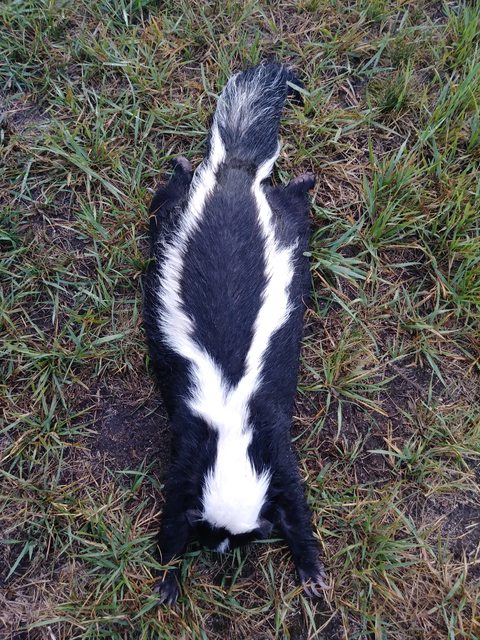
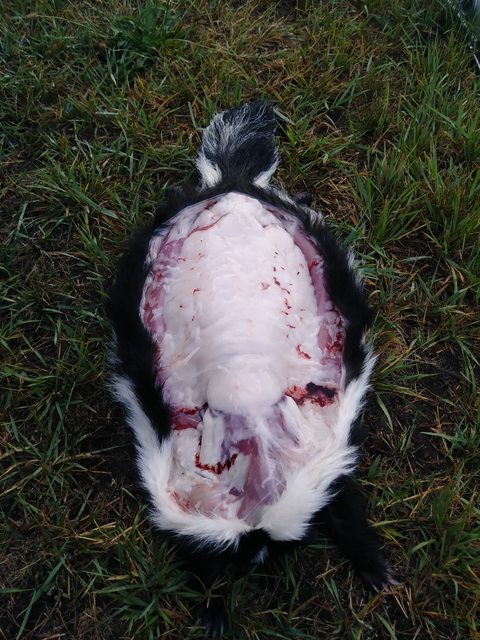
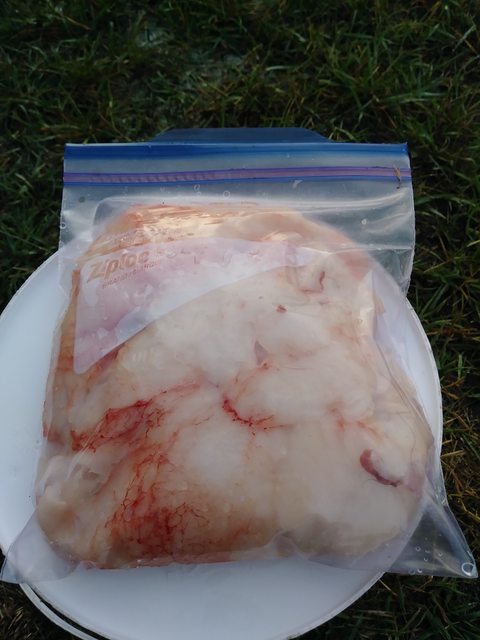
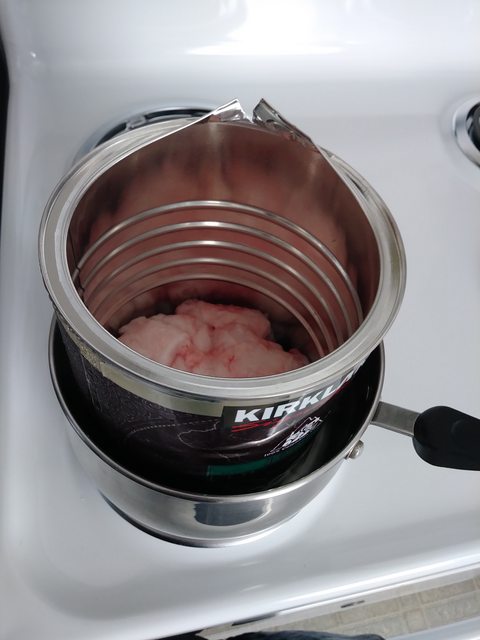
And here we Have .451 SSL (Super Skunk Lube

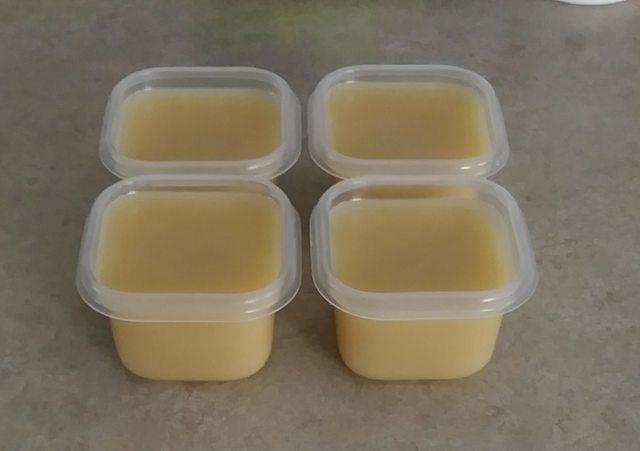
Idaholewis
Well-Known Member
- Joined
- Jun 30, 2017
- Messages
- 7,287
- Reaction score
- 10,288
Does Rendered Skunk Fat Lube Really Work?
It does, and does so Quite well This is 5 Shots at 80ish Yards, Patches lubed with the above Skunk Lube
This is 5 Shots at 80ish Yards, Patches lubed with the above Skunk Lube
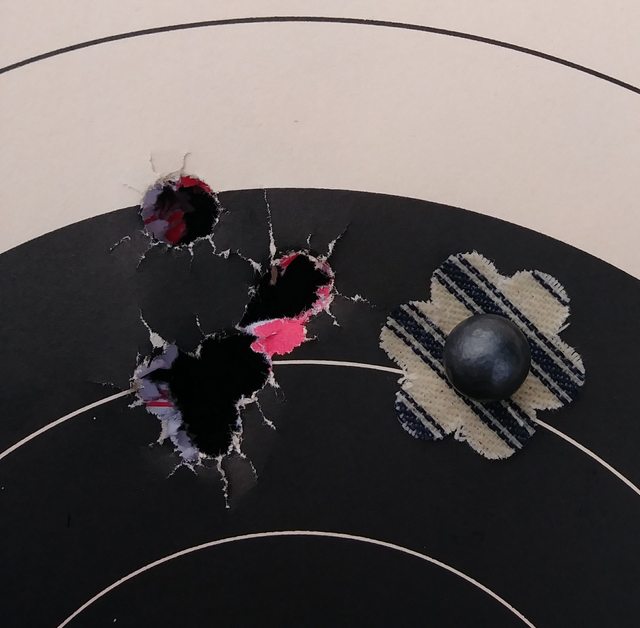
It does, and does so Quite well
 This is 5 Shots at 80ish Yards, Patches lubed with the above Skunk Lube
This is 5 Shots at 80ish Yards, Patches lubed with the above Skunk Lube
- Joined
- Nov 11, 2018
- Messages
- 8,356
- Reaction score
- 11,968
Nothing else added? Cool. I don't see many skunks around here anymore. Lots of coyotes. How does raccoon or possum lube work?
This is absolutly GREAT! LMAO!!!



Just go Skunk and you’ll never go Back to anything else
I have trapped, and Disposed of 15 of these Nasty Little Fellers, I decided to find a use for them




And here we Have .451 SSL (Super Skunk Lube) NO JOKE, this is as GOOD as Lube gets

Idaholewis
Well-Known Member
- Joined
- Jun 30, 2017
- Messages
- 7,287
- Reaction score
- 10,288
This is absolutly GREAT! LMAO!!!
I got some FUNNY looks over doing that
 The Fat has ZERO Smell. No doubt a Guy could have ate the Rendered Cracklings, i just Chose not to
The Fat has ZERO Smell. No doubt a Guy could have ate the Rendered Cracklings, i just Chose not to Idaholewis
Well-Known Member
- Joined
- Jun 30, 2017
- Messages
- 7,287
- Reaction score
- 10,288
The Bullshop NASA Lube Boy’s are just Jealous 
The Ole Saying

The Ole Saying

Idaholewis
Well-Known Member
- Joined
- Jun 30, 2017
- Messages
- 7,287
- Reaction score
- 10,288
Nothing else added? Cool. I don't see many skunks around here anymore. Lots of coyotes. How does raccoon or possum lube work?
Lanolin, Beeswax
 I played with the Texture til i felt it was PERFECT, It Shoots as good as ANY lube i have EVER Used.
I played with the Texture til i felt it was PERFECT, It Shoots as good as ANY lube i have EVER Used. Raccoon Fat would almost Guaranteed Work, My dad hunted hounds for YEARS, I remember Skinning Raccoon, The Fat is GREASY SLICK stuff, Which is PRECISELY what we Want in a Good Bullet Lube
 So my bet is Raccoon would work good, There’s Only 1 way to Find out Michigan, Get adventurous
So my bet is Raccoon would work good, There’s Only 1 way to Find out Michigan, Get adventurous - Joined
- Nov 22, 2018
- Messages
- 287
- Reaction score
- 225
I feel sorry for all the skunks now that you have opened this can of stink. They will not have a place to hide for guys wanting their hide. 





- Joined
- Nov 22, 2018
- Messages
- 287
- Reaction score
- 225
Last summer I found a new use for Vaseline. I had a big issue with squirrels and racoons climbing my tripod feeder legs to get the feed. In the process they did lots of damage to the feeder housing and timer in addition to dragging feed out as too high a rate. Also had a bad azz boar hog that knew if he bumped the feeder legs he could get more corn. He found the one that gave the most corn then bumped it really hard until the feeder when down. He was relentless and trained me the importance to proper bracing and anchoring of feeders.I never bothered to find out what parrafin is made of til now. I had no idea it is a petroleum product, as is the vasoline i use in my grease recipe. It has worked pretty well for me. I think i im going to retire it and just switch to nasa lube. I really like making my own stuff for ML shootin. Wish I could duplicate Bullshops nasa lube.
My solution was to mix Vaseline with high amount of cayenne pepper then apply it to the feeder legs. It worked really well it. Those hot azz crickers stop coming around.
But thee boar was different. I decided to try a night hunt on him because he was a dandy. I took him the first night. It was right before I applied the pepper mix. Then the rest where not in love with the feeders after that. Maybe the pepper mix helped.


Idaholewis
Well-Known Member
- Joined
- Jun 30, 2017
- Messages
- 7,287
- Reaction score
- 10,288
Last summer I found a new use for Vaseline. I had a big issue with squirrels and racoons climbing my tripod feeder legs to get the feed. In the process they did lots of damage to the feeder housing and timer in addition to dragging feed out as too high a rate. Also had a bad azz boar hog that knew if he bumped the feeder legs he could get more corn. He found the one that gave the most corn then bumped it really hard until the feeder when down. He was relentless and trained me the importance to proper bracing and anchoring of feeders.
My solution was to mix Vaseline with high amount of cayenne pepper then apply it to the feeder legs. It worked really well it. Those hot azz crickers stop coming around.
But thee boar was different. I decided to try a night hunt on him because he was a dandy. I took him the first night. It was right before I applied the pepper mix. Then the rest where not in love with the feeders after that. Maybe the pepper mix helped.
View attachment 6234
View attachment 6236
What would a Hog like that Weigh? 250 or Better?
- Joined
- Nov 22, 2018
- Messages
- 287
- Reaction score
- 225
I guess him in the 350 range. His sows appeared to be in the same class
Idaholewis
Well-Known Member
- Joined
- Jun 30, 2017
- Messages
- 7,287
- Reaction score
- 10,288
I guess him in the 350 range. His sows appeared to be in the same class
That’s a BIG Hog! I can see he’s a Dandy

John Kaeding
New Member
- Joined
- Aug 10, 2019
- Messages
- 3
- Reaction score
- 1
Much thankful to everyone especially Mishagan Muzzy, MSalyards and GM-54. I do use the Armor lard and have always questioned the salt issue. I find that the fouling having a bit of soap in it really makes a big difference when cleaning. I do think I'll try a batch without the lard as the casteal soap I use is made with plenty of olive and coconut oil. I'll report back to you on how it works. Again thanks
Armour sells a premium lard that has no salt added. Sodium is listed as 0mg.
https://www.walmart.com/ip/Armour-Premium-All-Natural-Lard/330503403
If not here's some ideas, http://castboolits.gunloads.com/showthread.php?26524-Just-the-facts-Lube-recipes
Idaholewis
Well-Known Member
- Joined
- Jun 30, 2017
- Messages
- 7,287
- Reaction score
- 10,288
Idaholewis
Well-Known Member
- Joined
- Jun 30, 2017
- Messages
- 7,287
- Reaction score
- 10,288
I just lernt what lanolin is. I thought it was like paraffin. I make my lube with paraffin, beeswax and vasoline. Beeswax makes it sticky. Paraffin makes it harder. Vasoline makes it slippery-er or thinner.
This is kinda neat to Read on Beeswax, and goes with me saying “Depends on the Beeswax” If it’s Refined, or Not. It shouldn’t be sticky.
Beeswax
Beeswax is secreted by honeybees of a certain age in the form of thin scales. The scales are produced by glands of 12 to 17 days old worker bees on the ventral (stomach) surface of the abdomen. Worker bees have eight wax-producing glands on the inner sides of the sternites (the ventral shield or plate of each segment of the body). Wax is produced from abdominal segments 4 to 7. The size of these wax glands depends on the age of the worker.
Honeybees use the beeswax to build honey comb cells in which the young are raised and honey and pollen are stored. For the wax-making bees to secrete wax the ambient temperature in the hive has to be 33 to 36 °C (91 to 97 °F). Approximately eight pounds of honey is consumed by bees to produce one pound of beeswax (8 kg/kg). Estimates are that bees fly 150,000 miles to yield this one pound of beeswax (530,000 km/kg). When beekeepers go to extract the honey, they cut off the wax caps from each honeycomb cell. Its color varies from yellowish-white to brownish depending on purity and the type of flowers gathered by the bees. Wax from the brood comb of the honeybee hive tends to be darker than wax from the honey comb. Impurities accumulate more quickly in the brood comb. Due to the impurities, the wax has to be rendered before further use. The leftovers are called slumgum.
The wax may be clarified by heating in water and may then be used as a lubricant for bullets, drawers and windows, as a wood polish or in candles etc. As with petroleum waxes it may be softened by dilution with vegetable oil to make it more workable at room temperature.
Rendering Beeswax:
Cut the wax into chunks. Wrap in two layers of cheesecloth and tie the cheesecloth securely. Fill a large stainless-steel or tin-plated pot with water. (Other metals can discolor the wax.) Put the wax in cheesecloth into the pot and weigh it down with a brick or other heavy object. Bring the water to a temperature of about 190 degrees F. Do not let it boil, as this will damage the wax, causing it to be brittle. Simmer the wax until it is all melted. As it melts, the wax will flow out of the cheesecloth, leaving most of the debris behind. The wax will float on the top of the water.
Remove the wax from the water and let cool. If the wax still has a lot of debris in it, repeat this process using four layers of cheesecloth. Some debris, called slumgum, will remain on the bottom of the wax. Slice this off with a hot knife.
Physical characteristics: It is a tough wax formed from a mixture of several compounds including: hydrocarbons 14%, monoesters 35%, diesters 14%, triesters 3%, hydroxy monoesters 4%, hydroxy polyesters 8%, acid esters 1%, acid polyesters 2%, free acids 12%, free alcohols 1%, unidentified 6%
The main components of beeswax are palmitate, palmitoleate, hydroxypalmitate and oleate esters of long-chain (30-32 carbons) aliphatic alcohols, with the ratio of triacontanylpalmitate CH3(CH2)29O-CO-(CH2)14CH3 to cerotic acid CH3(CH2)24COOH, the two principal components, being 6:1.
Beeswax has a high melting point range, of 62°C to 64°C (144°F to 147°F). It does not boil in air, but continues to heat until it bursts into flame at around 120°C (250°F). If beeswax is heated above 85 °C (185 °F) discoloration occurs. Density at 15°C is 0.958 to 0.970 g/cm3.
Bees wax can be classified generally into European and Oriental types. The ratio of saponification (to convert (a fat) into soap by treating with an alkali) value is lower (3-5) for European beeswax, and higher (8-9) for Oriental types.
Hydroxyoctacosanyl hydroxystearate can be used as a beeswax substitute as a consistency regulator and emulsion stabilizer. Japan wax is another substitute.
- Joined
- Nov 11, 2018
- Messages
- 8,356
- Reaction score
- 11,968
What is this? Sounds horrible.Hydroxyoctacosanyl hydroxystearate can be used as a beeswax substitute
Idaholewis
Well-Known Member
- Joined
- Jun 30, 2017
- Messages
- 7,287
- Reaction score
- 10,288




